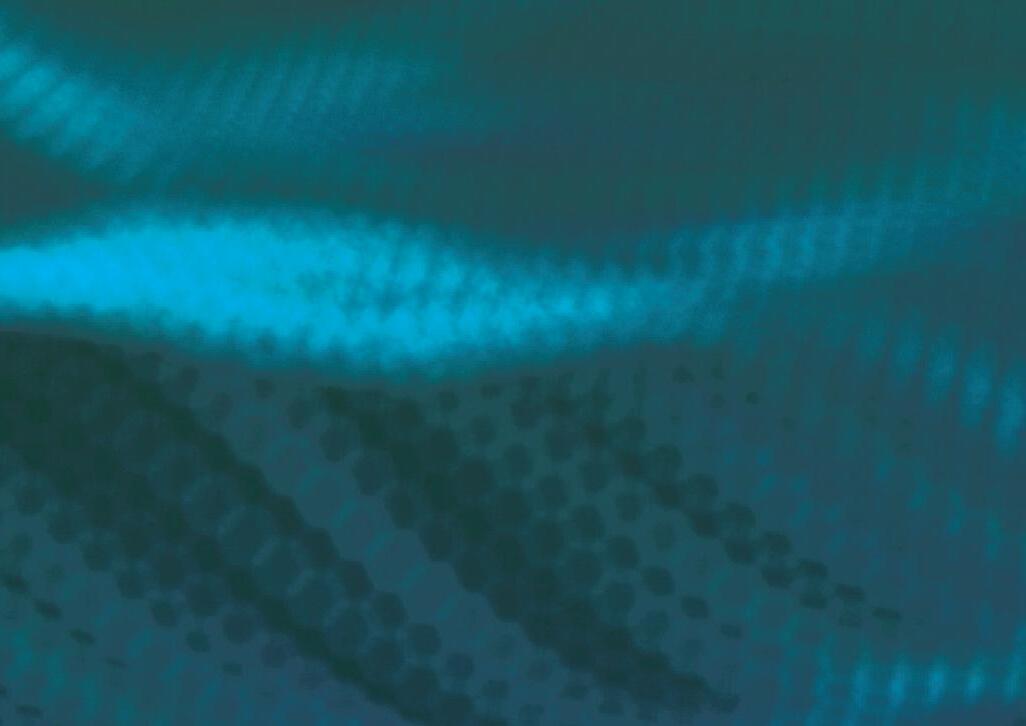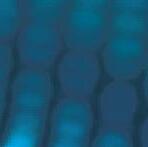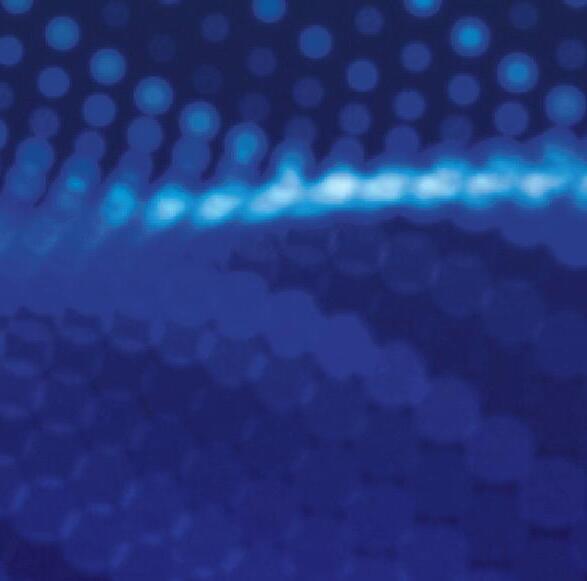
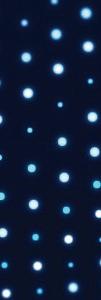




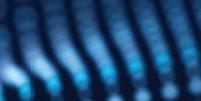

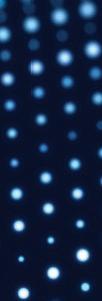



















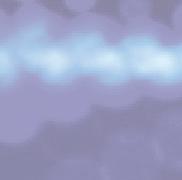




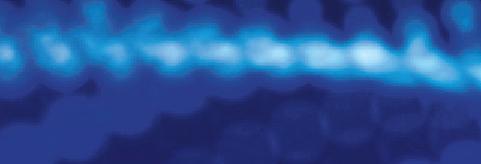

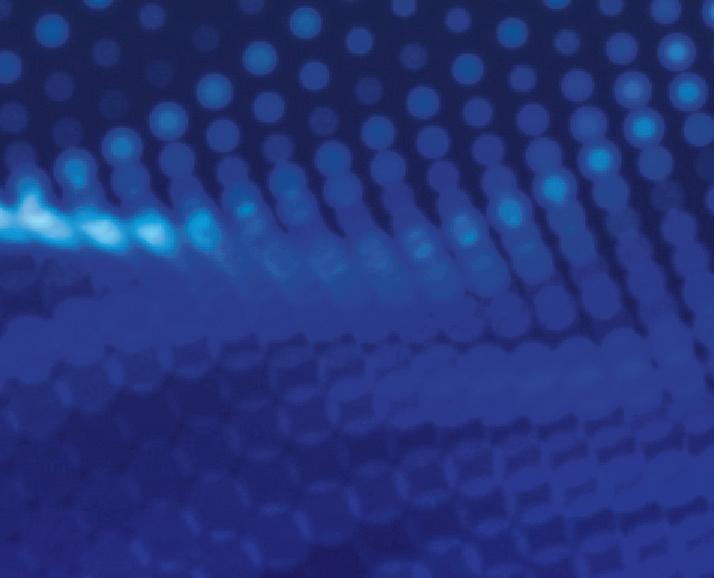







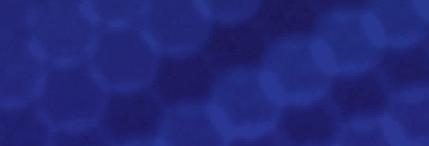
















































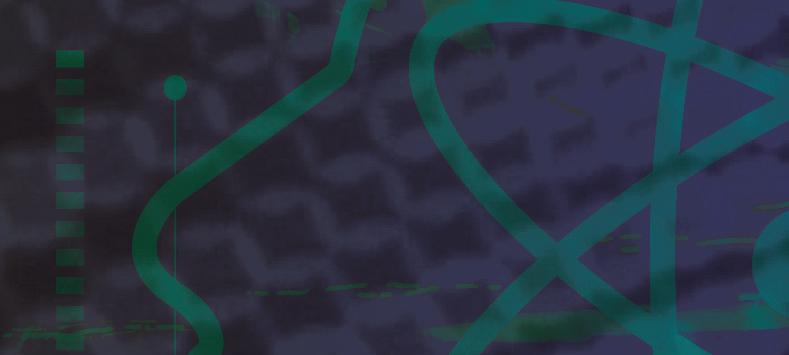
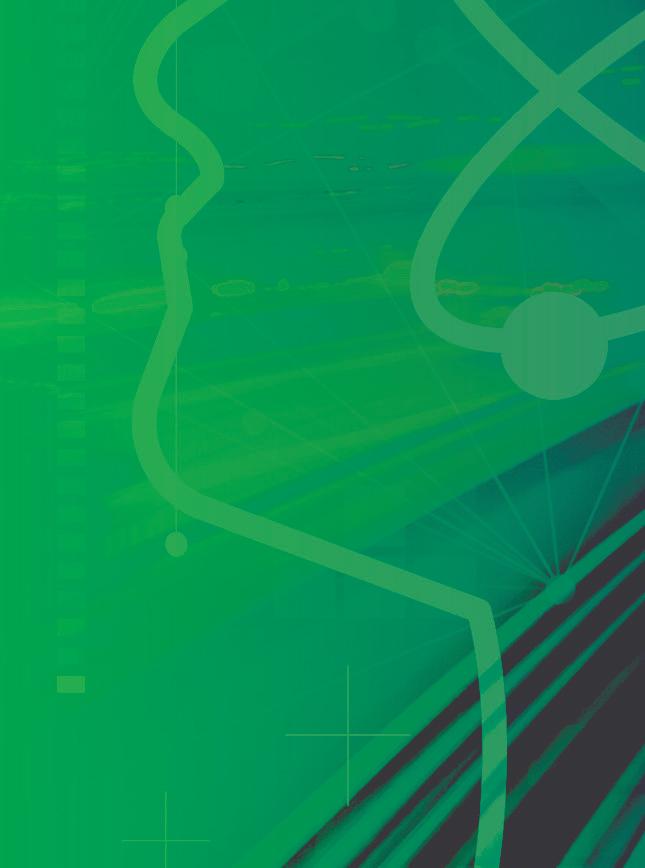




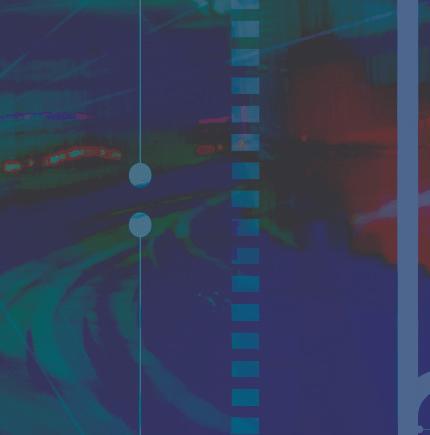




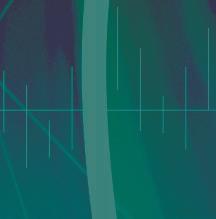
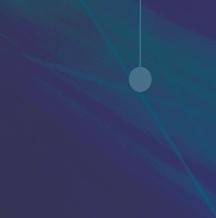

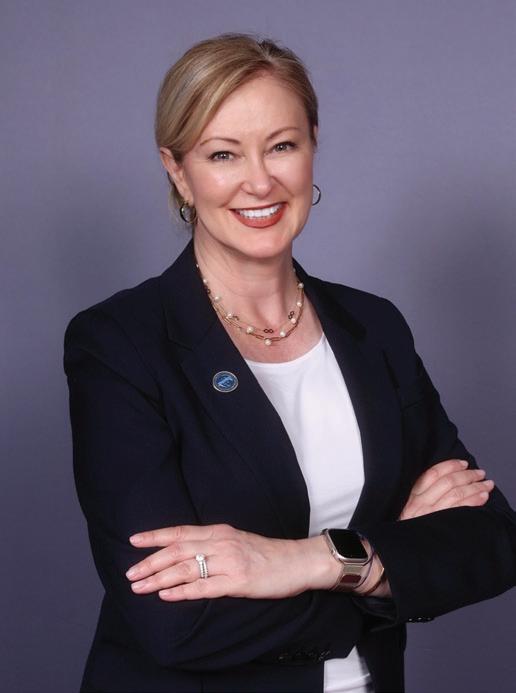
Toour Education & Research (E&R) Fund donors, thank you for being a vital part of profession’s advancement. Your generous support fuels strategic research, educational programs, and awards. With support from members like you, AAPM has expanded its professional impact, funding approximately $532,000 in research seed grants, mentorship programs, travel grants, PhD student fellowships, distinguished lectureships, and travel and tuition awards in 2024. Your gift turns vision into action and ensures a bright future for our field. The AAPM Development Committee invites you to review the award recipient testimonials included in the report.


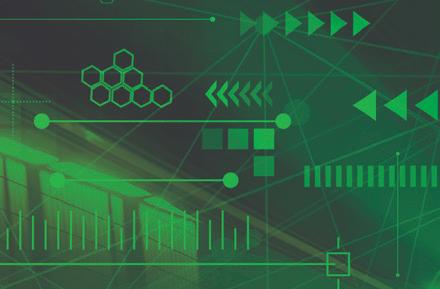

These testimonials highlight the immense value donor support provides to recipients and are sure to inspire you. Additionally, the report details the current state of the E&R Fund, showcasing the contributions of individual donors.
Since the E&R Fund was established in 1989, AAPM has awarded over $5 million in grants, fellowships, and awards. Will you join us in sustaining this wonderful legacy? Donor levels and gift options are available here. We encourage every AAPM member to contribute. If you have any questions or would like to explore development opportunities, please don't hesitate to reach out. I’d love to hear from you.

Michelle Wells, FAAPM Chair, AAPM Development Committee


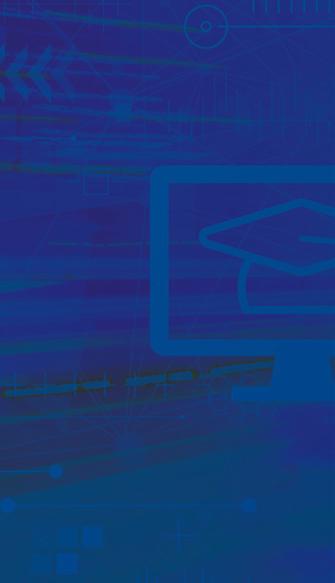


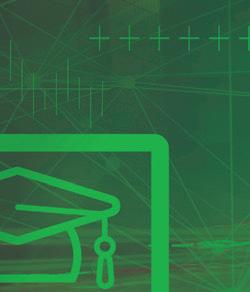
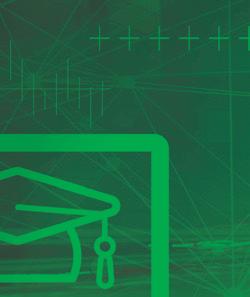





























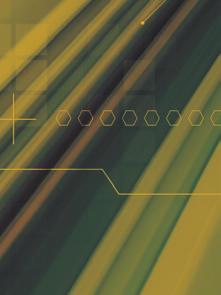


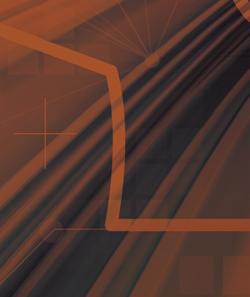





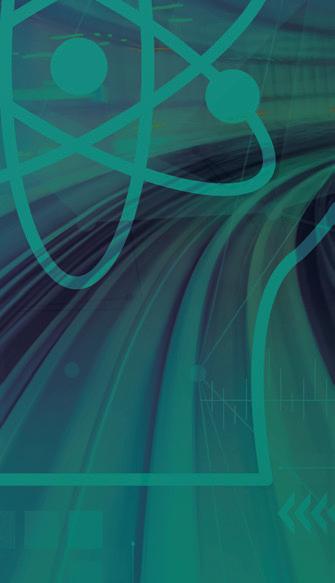



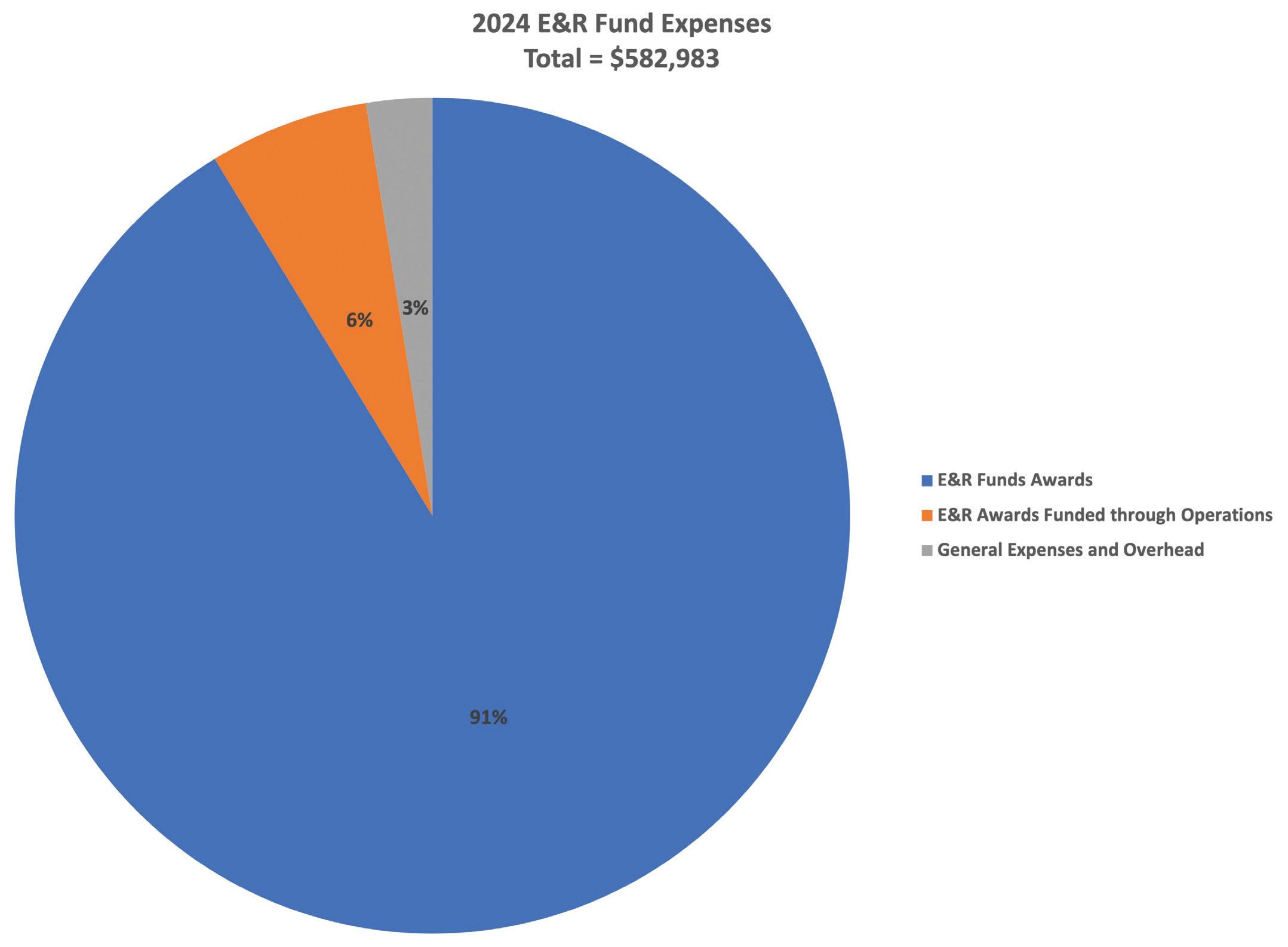



Meixu Chen
University of Texas Southwestern Medical Center Department of Radiation Oncology
Interpretable multi-modal multi-task radiation therapy outcome prediction
Accurate survival prediction for Head and Neck
Cancer (HNC) patients undergoing radiotherapy is critical for optimizing personalized treatment strategies. However, prognosis modeling remains challenging due to heterogeneous disease presentations and limited patient data. While multimodal data fusion has shown promise, existing approaches predominantly rely on single-task learning, failing to capture interdependencies among clinical outcomes. Furthermore, the opacity of deep learning models hinders their clinical applicability, necessitating advancements in interpretability. This project aims to develop an interpretable multi-modal multi-task deep learning model for HNC treatment outcome prediction. A novel deep learning framework will be constructed to simultaneously predict multiple clinically relevant outcomes. Loss functions will be tail ored to align with survival evaluation metrics, improving model optimization. Additionally, state-of-the-art interpretability techniques will be explored, including a customized Grad-CAM for imaging-based predictions and feature importance analysis for non-imaging data, ensuring clinical transparency. By advancing AI-driven prognostic modeling, this research has the potential to enhance individualized treatment planning, driving more effective, data-informed oncology care. With the support of the Seed Grant, this work will strengthen my expertise in oncology AI research and support my trajectory as an independent investigator in medical AI.

Zhuoran Jiang Stanford University Department of Radiation Oncology
Towards Real-time 3D In-vivo Dosimetry for FLASH Proton Therapy using Foundation Model-enhanced Protoacoustic/Ultrasound Dual-modality Imaging (PUDI) Proton FLASH radiation therapy (RT), featuring ultrahigh dose rates (>40Gy/s), promises a paradigm shift in cancer treatment. This technique has shown substantial normal tissue sparing without compromising anti-tumor efficacy. However, realtime 3D in-vivo and in-depth dose verification for proton FLASH RT remains a major challenge due to the inadequacy of current dosimeters. To address this clinical need, our long-term goal is to establish a novel protoacoustic/ultrasound dual-modality imaging (PUDI) system as a robust and well-characterized 3D in-vivo dosimetry for proton FLASH RT verification. In this proposal, we aim to enhance PUDI’s performance in two critical aspects: (1) developing a robust model for deformable image registration of prior and US images to provide precise real-time anatomy information; and (2) developing a knowled geguided model for robust protoacoustic image reconstruction from limitedangle measurements of matrix transducers. This seed grant will deliver pivotal preliminary results to demonstrate the feasibility of PUDI, which paves the way for larger grant applications afterward. PUDI is a promising system as the first to provide real-time 3D in-vivo dose verification for proton FLASH, potentially heralding a new epoch of high-precision proton FLASH RT in cancer treatment.
Four $25,000 grants were awarded to provide funds to develop exciting investigator-initiated concepts, which will hopefully lead to successful longer term project funding from the NIH or equivalent funding sources. Funding for the 12-month grant period began July 2024. Research results are submitted for presentation at future AAPM meetings.



Benjamin Lopez
The University of Texas MD
Anderson Cancer Center
Department of Imaging Physics
Lung Shunt and Dose Verification Following 90Y-Microsphere Radioembolization Treatments
Radiation pneumonitis is a rare, but serious, complication following trans-arterial radioembolization (TARE) of liver tumors, arising when yttrium-90-microspheres (90Y-microspheres) bypass the liver parenchyma through arteriovenous shunts and become lodged in pulmonary capillaries. Current standard practice estimates the lung mean dose (LMD) from TARE using the administered 90Y-microsphere activity, the lung shunt fraction (LSF) calculated from planar imaging of technetium-99mlabelled macro-aggregated albumin (99mTc-MAA) administered in a separate procedure prior to TARE, and an assumed 1 kg lung mass. The objective of my project is to establish techniques to more precisely measure patientspecific lung masses, LSFs, and LMDs directly from post-TARE 90Y SPECT/CT and PET/CT imaging. My goal is to develop practical clinical tools to assess 9 0Y-microsphere lung doses and help identify cases with potentially concerning high 90Y-microsphere lung shunting. With the support of the AAPM Research Seed Funding Grant, I have been able design phantoms and perform experiments to achieve this goal. Furthermore, this award has been instrumental to my scientific and professional development as I transition this year from a medical physics resident to an early-career clinical medical physicist at an academic institution.
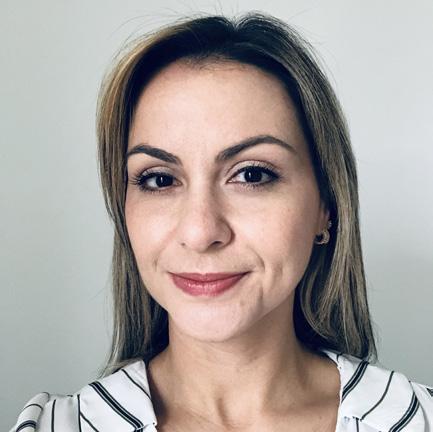
Poliana Camila Marinello
The University of Texas MD Anderson Cancer Center Department of Radiation Physics
High-LET alpha particles combined with PARP1 inhibition to sensitize immunologically cold cancers to immune checkpoint blockade
Immunologically cold breast cancers are aggressive and difficult to treat due to their lack of immune cell infiltration. One of the mechanisms that radiation stimulates antitumor immunity is by inducing cytoplasmic double-strand DNA (dsDNA) in cancer cells. High-LET alpha-particles induce more complex DNA damage that is harder to repair than low-LET radiation, resulting in more cytoplasmic dsDNA. DNA repair inhibitors, such as the Poly (ADP-ribose) polymerase (PARP) inhibitor, can block DNA repair from radiation-induced DNA damage and amplify even further cytoplasmic dsDNA, offering a promising strategy to stimulate antitumor immunity and enhance therapeutic efficacy. This project investigates the immunomodulatory potential of alpha-particles in combination with a selective PARP1 inhibitor (PARP1i) in breast cancer. Our data demonstrate th at PARP1i combined with alphaparticles promotes greater radiosensitization of breast cancer cells than PARP1i combined with photons. Alphaparticles generated more DNA damage and induced the expression of immunomodulatory proteins more effectively than photons. Furthermore, PARP1i enhanced residual DNA damage and immunomodulatory effects induced by alpha-particles. The next phase of this research will explore how this combination synergizes with immune checkpoint blockade to improve treatment efficacy in vivo. Support from the AAPM Seed Grant has been crucial for developing the foundation of this research.


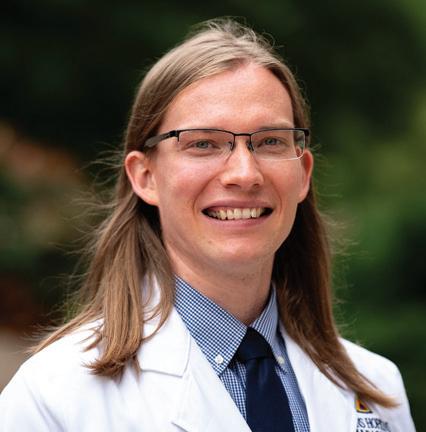
David Adam
Johns Hopkins University Department of Radiation Oncology and Molecular Radiation Sciences
Development of small-scale computational model and pre-clinical validation of patient-specific salivary gland toxicity predictions for beta emittingradiopharmaceuticals
Radiopharmaceutical therapy (RPT) is a rapidly re-emerging treatment modality which holds promise to preferentially treat systemic disease. There is emerging evidence that EBRT normal tissue dose limits are inadequate to describe observed toxicities to RPT treatments. This is hypothesized to be due to the vastly different spatial and temporal dose distribution delivered by the RPT compounds compared to EBRT. The salivary glands have been identified as an organ at risk for 131I and 177Lu-PSMA-617 treatments. Because of the high dose non-uniformities in salivary glands, mean dose values do not correlate well with observed toxicities and new dosimetry methods will need to be devised. This work entails the development and validation of a macro-to-micro (M2µ) salivary gland model. A model of the salivary glands will be created based on ex-vivo histology and GEANT4 Monte Carlo simulations will be conducted for 131I and 177Lu to compute small-scale S-values. Pre-clinical experiments will be conducted to then develop murine-model tissue apportionment factors to provide meaningful applications of the model. Patient cases will be used to demonstrate paradigms of translation and offer hypotheses of toxicities observed in human patients. The methods and framework will ultimately be applicable to other RPT paradigms. The work has enormous translational potential both in the pre-clinical and clinical space, will benefit patient care, and help Dr. Adam progress as an independent researcher.
Nolan Esplen
The University of Texas MD Anderson Cancer Center Department of Medical Physics
Two $25,000 grants were jointly awarded by AAPM and the American Society of Radiation Oncology (ASTRO) with the goal of advancing the field of radiation oncology in novel ways through the support of early-career scientists involved in radiation oncology physics-related research.


The AAPM Board of Directors approved $420,000 in support over six years ($70,000/year starting in 2020) to co-fund six positions in existing or new imaging physics residency programs, and in support, the Radiological Society of North America (RSNA) Board of Directors approved $210,000 for an additional three positions. The intent of these funds is that after the period of the award is over, the awardee institution(s) will continue to fully support these imaging physics residency positions. With this funding, the awardee’s institution will receive $35,000 per year for two years as matching support (50/50) for one imaging physics resident. This provides matching funds for nine imaging physics residents over the next six years.
Awarded 2024 | 1st Year Funding 2025 | 2nd Year Funding 2026
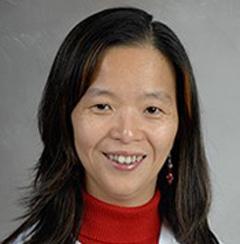
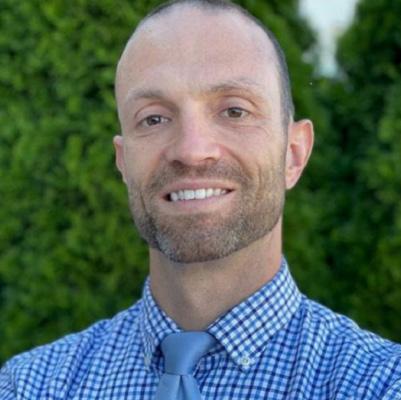
Janet Ching-Mei Feng, PhD
The University of Texas Health Sciences Center at Houston/McGovern Medical School Department of Diagnostic and Interventional Imaging
John Holmes, DMP
University of Pittsburgh/UPMC Department of Radiology and Radiation Safety
Awarded 2023 | 1st Year Funding 2024 | 2nd Year Funding 2025
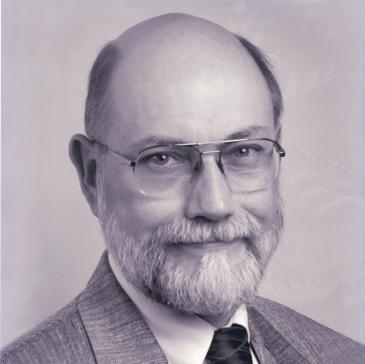
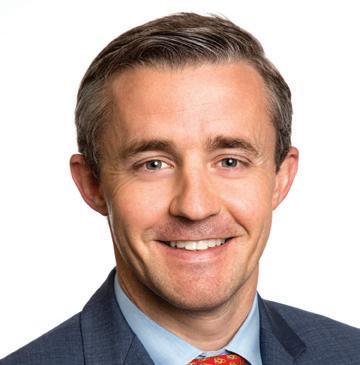
E. Russell Ritenour, PhD
Medical University of South Carolina Department of Diagnostic Radiology
Christopher C. Smitherman
Petrone Associates, LLC Department of Diagnostic Medical Physics
Awarded 2022 | 1st Year Funding 2023 | 2nd Year Funding 2024


Kalpana Kanal, PhD
University of Washington Department of Radiology
Jie Zhang, PhD
University of Kentucky Department of Radiology



Second Year or Higher
The University of Texas MD Anderson Cancer Center


Second Year or Higher University of Toronto
First Year
McGill University
The AAPM/RSNA Doctoral and Masters Graduate Fellowships are comprised of four Doctoral awards (PhD or DMP) and three Masters awards each in the amount of $10,000. Additionally, one each of the Masters and Doctoral awards is reserved for underrepresented applicants. Awardees are outstanding students based on their academic record, recommendations, curriculum vitae, and self statement of how an award would benefit their graduate studies.
First Year
University of Texas
Southwestern Medical Center
Masters Recipients

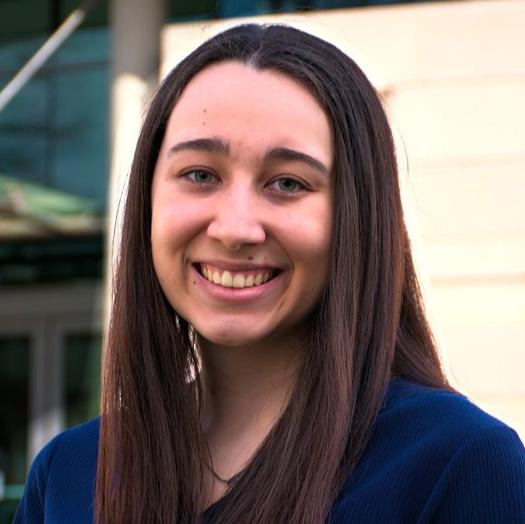

University


The Summer Undergraduate Fellowship Program (SUFP) is a 10-week (40 hours per week) summer program designed to provide opportunities for undergraduate university students to gain experience in medical physics by performing research in a medical physics laboratory or assisting with clinical service at a clinical facility. The mentor and fellow determine the exact 10-week schedule (MaySeptember). In this program, AAPM matches exceptional students with exceptional medical physicists, many whom are faculty at leading research centers. Students participating in the program are placed into summer positions that are consistent with their interest. Selected for the program on a competitive basis, summer fellows receive a $6,000 stipend from AAPM. Additional funding provided by the AAPM Northwest Chapter.

Aydin Aghaie
University of Maryland, College Park
Senior, Physics
Mentor: Edward Graves, PhD
Stanford University
Department of Radiation Oncology - Radiation Physics
During my AAPM Medical Physics Fellowship at Stanford University, I gained a comprehensive understanding of medical physics, focusing on Monte Carlo simulations, radiotherapy, and in vitro testing. A significant part of my work involved independently modeling Stanford's XRAD SmART+ system using the EGSnrc toolkit. I conducted Monte Carlo simulations to analyze ionizing radiation transport through matter, where I generated eight unique EGSnrc input files, processed phase space files, and used DOSXYZnrc for dose deposition in solid water among other materials. I performed quality assurance testing with Gafchromic EBT-XD films and analyzed the results using VICTORIA software, comparing computer-generated and experimental results to validate the accuracy of the simulations. In addition to my primary research, I participated in a range of collaborative projects, including in vitro testing of anti-CD47 antibodies to inhibit cancer growth and radiotherapy studies combining antiCD47 with PMX205 to induce macrophage-mediated abscopal effects. I also gained hands-on experience in clinical settings, conducting daily QA, treatment planning, and dose verification under expert mentors. Through these projects, I developed a deeper understanding of radiation biology, imaging, and treatment planning. The fellowship sharpened my technical skills, reinforced the importance of collaboration, and provided valuable insights into the clinical application of medical physics in cancer treatment.
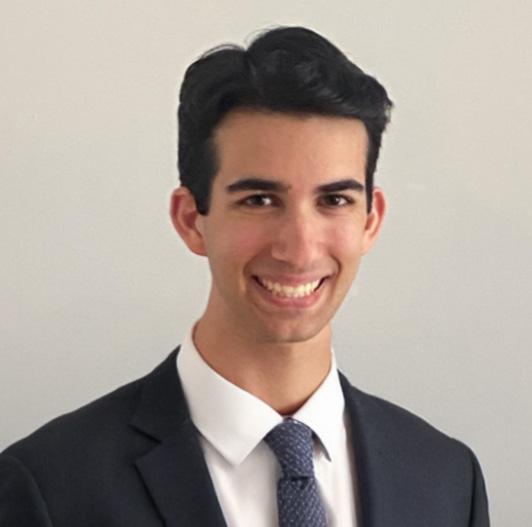
Brett Bocian
University of Miami
Senior, Biomedical Engineering
Mentor: Patrick J. Jensen, PhD
The University of Texas MD Anderson Cancer Center Department of Radiation Physics
At MDACC, I worked on developing a computationally designed filter to improve dose uniformity in single-channel vaginal cylinder HDR brachytherapy for endometrial cancer. Using Monte Carlo simulations in TOPAS, I analyzed dose distributions and iteratively refined the filter design to achieve improved uniformity. The final design reduced dose variation at the prescription depth, particularly near the applicator tip. Dr. Patrick J. Jensen and Dr. Luis Perles

provided valuable guidance on optimizing the simulation setup for accurate analysis and improving its runtime. While the initially assigned project idea was an AI-based DRR registration study, we pivoted due to time constraints and unexpected changes. This experience taught me the importance of adaptability and leveraging my existing skills to complete a project within a deadline. I also completed a second project on dose perturbation measurements in intraoperative radiation therapy. Both projects have since been submitted for review for the AAPM Annual Meeting 2025. Beyond research, exposure to key medical physics concepts and clinical shadowing provided valuable insight into real-world applications. Observing treatments firsthand reinforced the significance of precise dose delivery and strengthened my understanding of how computational techniques translate into patient care. These ten weeks in the SUFP solidified my resolve to pursue residency after graduate school and apply my skills toward improving patient care.

Alex Culver Loyola University, Chicago Senior, Biophysics
Mentor: Carlos Huesa-Berral,
PhD
Massachusetts General Hospital Department of Radiation Oncology
During my AAPM Summer Undergraduate Fellowship at Massachusetts General Hospital, I worked on simulating how different types of radiation, specifically Yttrium 90 and Actinium 225, affect liver tumors. Using TOPAS, a Monte Carlo simulation tool, I modeled how radiation interacts with tumor cells and spreads through tissue. The goal was to compare how these isotopes deliver treatment, helping refine targeted radiation therapies that could better attack tumors while sparing healthy cells. To do this, I built computer models that tracked how radiation particles moved and deposited energy in tumors. In the end, I developed a framework that helps compare the effectiveness of these therapies. Beyond the lab, I had the chance to attend the AAPM Annual Meeting in Los Angeles, where I met medical physicists from all over and saw firsthand how research translates into real world treatments. Sitting in on talks about radiation therapy and imaging technology gave me a bigger picture view of where the field is headed. The conference reinforced my excitement about medical physics and how I can play a role in advancing cancer treatment. This fellowship showed me how physics and medicine come together to solve real

problems, and it strengthened my desire to work in this field. I gained hands on experience in computational modeling, learned from experts, and saw how collaboration drives innovation. More than anything, this summer confirmed that medical physics is the path I want to follow.

Katherine Hazelwood
Rhodes College Junior, Physics, Biochemistry and Molecular Biology
Mentor: Damodar Pokhrel, PhD University of Kentucky Department of Radiation Oncology
An Investigation into the Feasibility and Efficacy of Small Lesion Stereotactic Radiosurgery on the Ring-Mounted Halcyon LINAC
The goal of this project was to investigate the feasibility of using a Ring-Mounted Halcyon LINAC for small (<1 cm) brain lesions. If this system could be used for Stereotactic Radiosurgery of such brain lesions, this could increase the accessibility of care, as some cancer centers are Halcyononly. This can also be used for patients who require an immediate SRS treatment when other C-arm LINACs are not available. This study was performed by retrospectively replanning 15 SRS patients who were previously treated on TrueBeam and investigating conformity index, gradient index, gradient distance, PTV coverage, and doses to organs-at-risk. Additionally, patient-specific quality assurance and independent Monte Carlo 2nd checks were performed. A paper written about this study is currently under review. This project and fellowship allowed me to learn about LINAC systems, basic treatment planning, and assessment of plans. I had the opportunity to shadow Medical Physicists, which helped to deepen my understanding of physical principles and how they apply to radiation oncology. This fellowship also solidified my desire to pursue a PhD in Medical Physics. Additionally, I have been able to present this project to the Physics Department at my College, which has helped to improve my ability to effectively communicate science.


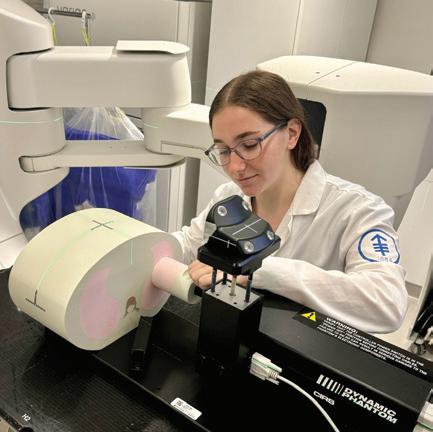
Taliah Lansing
College of Wooster
Senior, Physics and Mathematics
Mentor: Hao Zhang, PhD
Memorial Sloan Kettering Cancer Center
Department of Medical Physics
Next-generation nonstop gated CBCT imaging technique for respiratory gating radiotherapy
This project focused on analyzing dosimetric and efficiency outcomes from 1,000 patients receiving motion management during SBRT of the lung. AI analysis methods such as classification algorithms and oversampling techniques were utilized. By showing the benefits of utilizing the respiratory gating (RG) technique, we can emphasize the need for a nonstop-gated CBCT imaging technique. This would increase efficiency and allow physicians to prescribe RG more frequently. This research has developed into two journal articles (under peer review/ in progress) and a 100 page thesis. My participation in this project allowed me to have incredible experience in the clinical setting, both with patients and phantoms. Understanding the role of each person on the radiation therapy team is an integral part of providing safe and consistent care. This opportun ity has solidified my desire to become a clinical medical physicist.

Justina Lee
University of Pennsylvania
Junior, Physics
Mentor: Piotr Zygmanski, PhD
Harvard Medical School/DanaFarber Cancer Institute/Brigham and Women's Hospital
Department of Radiation
Oncology
Simulating Lung Tumor Motion via Charged Particle Current Sensing
The research I was involved in as an AAPM Summer Undergraduate Research Fellow was under the guidance of Professor Piotr Zygmanski at Brigham & Women's Hospital and Dana Farber Cancer Institute. I worked on the applicability of charged particle current sensing to tracking lung tumor motion and simulating X-rays using a moving charge cloud. This is important because lung tumors are notoriously difficult to treat due to their location in dynamic sites of the body. Thoracic motion is induced
from respiration introducing complexities to treatment planning. My project was performed full time between May and August and resulted in a poster presentation at the 2024 Fall Expo held at the University of Pennsylvania. In addition, this research project served as the basis for my nomination and later selection as a recipient of the Barry Goldwater Scho larship. This fellowship has enlightened me on the very interesting applications of physics to medicine and has affirmed my desire to pursue a research career in the radiation and oncological sciences.
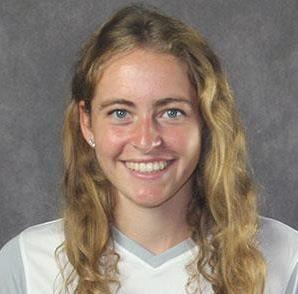
Bernadette Lesieur
Saint Michael's College Senior, Physics
Mentor: Atchar Sudhyadhom, PhD Harvard Medical School/DanaFarber Cancer Institute/Brigham and Women's Hospital Department of Radiation Oncology
This summer I worked with my mentor Dr. Atchar Sudhyadhom on a radiation chemistry project that worked towards understanding tumor conditions before, during, and after radiation treatment. This project is important because knowing exactly what occurs within the tumor during and after radiation can help medical physicists know how much radiation a tumor has received after treatment and decipher radiated versus non-radiated tissue on MR scans. This in turn will result in more accurate treatment plans in the future and the ability to check progress and results of radiation treatment. In this project, we analyzed the change in T1 relaxion values over time of phantoms via a dynamic scan on a ViewRay MRidian MR-Linac. I performed this project by creating, scanning, irradiating, and analyzing phantoms made of water, gadolinium, and coumarin. This project accomplished a better understanding of the changes that occur within a phantom in regards to T1 value during and after radiation treatment. This fellowship taught me many aspects of medical physics regarding radiation chemistry, adaptive radiation treatment, MRI dynamics, and radiation interactions with tumors. This experience helped solidify my desire to pursue medical physics as a future career where I will have the opportunity to improve radiation treatment for oncology patients.


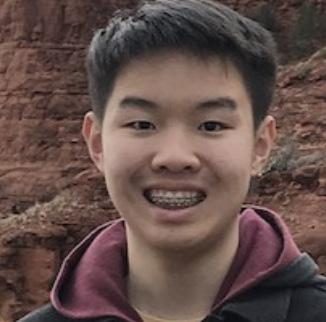
Joshua Pan
University of California, Berkeley Junior, Nuclear Engineering, Electrical Engineering, and Computer Science
Mentor: Carri Glide-Hurst, PhD University of Wisconsin, Madison Department of Human Oncology
Standing Tall to Cancer: First experience with upright vertical CT for proton therapy
This past summer, I worked on various tasks involving the new Leo Cancer Care Upright CT. My primary project focused on generating synthetic upright images from supine images provided by the Leo Cancer Care team. Using deep learning AI models — specifically a nnU-Net — I trained multiple models with different hyperparameters to optimize DICE and SSIM scores, establishing a baseline for future supine-to-upright image translation projects. This work is important because upright CTs are not widely available for diagnostic and treatment planning. Converting supine images to upright ones enables better radiation therapy planning and prepares for proton treatment on upright machines. Additionally, I contributed to developing a model for segmenting cardiac substructures. Building on previous models, I implemented a cascade approach, segmenting structures from the easiest to the most complex. These experiences deepened my understanding of AI-driven medical imaging and its potential to enhance patient care. This fellowship has broadened my perspective on AI’s role in healthcare, reinforcing my passion for innovation in medical imaging. I am incredibly grateful to Dr. Carri Glide-Hurst and her lab for their mentorship and support. This experience has been truly life-changing, shaping my future aspirations in the field.
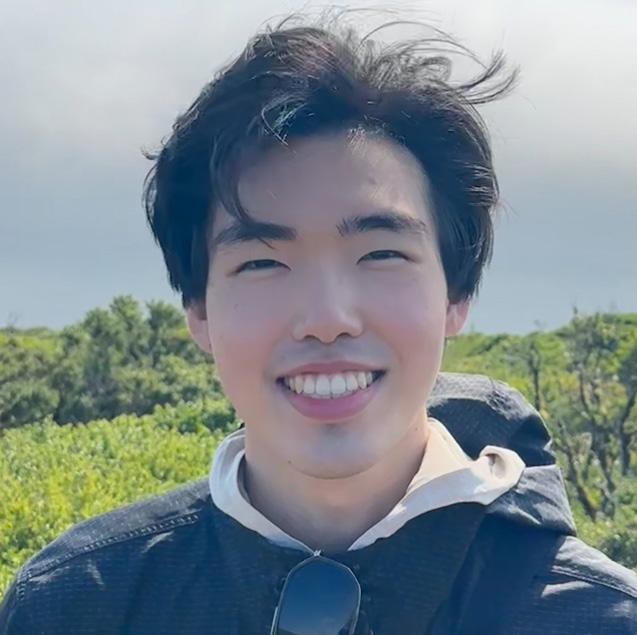
Yurok
Song
Emory University
Junior, Physics
Mentor: Lianli Liu, PhD
Stanford University Department of Radiation
Oncology
Last summer, I spent ten weeks at Stanford University under the mentorship of Dr. Lianli Liu, funded by the AAPM Summer Undergraduate Fellowship. My project addressed
the clinical challenge of lengthy diffusion-weighted MRI (DWI) scans by combining a low-rank SVD prior with implicit neural representation learning to reconstruct high-quality DWI images from 10-fold under-sampled k-space data. I implemented a 16-layer MLP to learn a continuous spatial mapping, validated on brain datasets from ten subjects with nine b-values, and demonstrated improved PSNR and accurate ADC and diffusion kurtosis metrics compared to standard GRAPPA reconstructions. Throughout the fellowship, I gained hands-on experience in advanced MRI physics, Python-based algorithm development, and quantitative image analysis. This past summer’s work culminated in my first oral presentation at the 2025 MRinRT Conference, where I shared our findings with experts in the field. I am grateful for the AAPM’s support, which enabled me to deepen my research skills, forge lasting collaborations, and contribute to innovations in accelerated DWI.
Kaitlyn Atwood, Johns Hopkins University, Junior, Physics
Mentor: Evangelia Kaza, PhD
Harvard Medical School/Dana-Farber Cancer Institute/ Brigham and Women's Hospital Department of Radiation Oncology
Zach Ehret, SUNY Geneseo, Junior, Physics
Mentor: Olga Marie Dona Lemus, PhD
University of Rochester, Department of Radiation Oncology
Vivian Felso, Agnes Scott College, Senior, Physics
Mentor: Jun Zhou, PhD
Emory University School of Medicine, Department of Radiation Oncology
Abigail Green, Bethel University, Junior, Applied Physics
Mentor: Daniel Gomez-Cardona, PhD
Gundersen Health System, Department of Medical Physics
Fahd Hatoum, Emory University, Junior, Engineering Physics
Mentor: Maryellen Giger, PhD, The University of Chicago, Department of Radiology
Grace Nehring, Rhodes College, Junior, Physics and Math
Mentor: Samantha Lloyd, PhD, BC Cancer Department of Medical Physics
Claire Tran, Georgia Institute of Technology, Junior, Nuclear Engineering
Mentor: Shu (Stella) Xing, PhD, Memorial Sloan Kettering Cancer Center, Department of Medical Physics


Education
Program (DREAM) is a ten-week (40-hours per week) summer program designed to increase the number of underrepresented groups in medical physics by creating new opportunities, outreach, and mentoring geared towards diversity recruitment of undergraduate students in the field of medical physics. Students participating in the program are placed into summer positions that are consistent with their interest. Selected for the program on a competitive basis, DREAM fellows receive a $6,000 stipend from AAPM. Additional funding provided by the AAPM Northwest, Southeast, and Southwest Chapters.
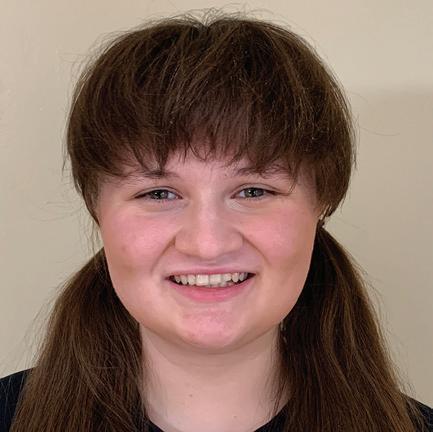
Careesa Billante
Grove City College
Junior, Physics
Mentor: Ashley Cetnar, PhD
Ohio State University Wexner Medical Center James Cancer Hospital and Solove Research Institute Department of Radiation Oncology
Accessibility is a topic of increasing importance in many fields, and medical physics is no exception. While the traditional educational pathway presents a plethora of challenges for the visually impaired, this does not necessarily mean that the field is entirely inaccessible. One of the goals of our project was to determine if the traditional pathway into medical physics is possible for someone with low or no vision. We created and disseminated a survey to graduate and residency program directors around the country, inquiring about the potential accessibility of their programs. Results from the survey showed a wide range of interpretations from educators in perceived ability of students with visual impairments completing graduate studies and residency education. Even so, we believe this will still inform the medical physics community of ho w it can better accommodate the visually impaired, In addition, we wanted to make a way to make diagnostic imaging more accessible to the blind, so we successfully designed and built a prototype to create tactile medical images. We 3D printed a matrix of pins which are coded to change height depending on the intensity of a pixel. This forms a topographical map of the image, which a blind person could use to 'feel' a diagnostic image. We hope that, if this were made on a larger scale, this could be a massive step in improving accessibility and instruction methods.

Alejandro Martinez
Georgia Institute of Technology
Senior, Physics
Mentor: Andrew Santoso, PhD
University of Colorado Anschutz Medical Campus
Department of Radiation Oncology
This past summer, I got to work with Dr. Andrew Santoso at the University of Colorado Anschutz Medical Campus. The project I worked on involved creating an electronic database for storing patients' custom electron therapy treatment plans. MATLAB was used to create the database by pulling patient-specific information from Varian's ARIA and Eclipse software. The database features over 100 unique patient electron therapy plans, as well as an interactive GUI with a comparison algorithm that compares plans within the database before obtaining relevant information such as the respective output factor of the closest geometrical match based on the dice coefficient. This project is important as it sought to improve the clinical workflow by standardizing the process for storing


and handling custom electron therapy plans. Aside from this clinically im pactful project, I got to work closely with the faculty within the radiation oncology department and shadow many clinical procedures, including HDR, TBI, TSE, SBRT, and various types of QA. I also had the opportunity to travel to my first AAPM annual meeting and conference ever, where I got to meet and network with many individuals within the field. I am extremely grateful to have been given the opportunity to participate in a program such as this. Overall, my experience with the DREAM program was overwhelmingly positive and strongly influenced my desire to pursue a PhD and career in medical physics.

Bryanna Stalnaker
Virginia Commonwealth University
Senior, Biomedical Engineering
Mentor: Sarah Quirk, PhD
Harvard Medical School/DanaFarber Cancer Institute/Brigham and Women's Hospital Department of Radiation Oncology
Developing novel adaptive radiotherapy protocols for pediatric and adolescent patient cohorts
My project focused on conducting a literature review and creating a comprehensive adaptive workflow for a clinical trial in the adolescent and young adult (AYA) population. As of summer 2024, no clinical trials were conducted using CT adaptive radiotherapy in the AYA population–only the adult population. In the adult population, clinical trials have shown adaptive radiotherapy to be successful, thus adaptive radiotherapy could produce benefits for the AYA population as well, e.g. reproductive sparring. For the first few weeks of my project, I read and summarized papers related to CT adaptive radiotherapy and adaptive radiotherapy in pediatrics. In the subsequent weeks, I created an inclusion/exclusion list and sorted through multiple potential patients. I also familiarized myself with the ETHOS emulator, which is the simulator used to con duct the trial. At my fellowship’s conclusion, I completed the framework for the clinical trial. I conducted a literature review, created an inclusion/exclusion criteria list, and determined the specific patients eligible for the trial. I also mastered the ability to simulate patient adaptive treatment plans using the ETHOS emulator and created an adaptive workflow for simulating treatment delivery. The fellowship has given me invaluable insight into the importance of CT adaptive radiotherapy, the method to conduct literature reviews, and why simulated treatment planning is so beneficial for medical physicists.

Hannah Williams
University of Chicago Senior, Physics
Mentor: Jessica Fagerstrom, PhD University of Washington Department of Radiation Oncology
I completed my 2024 DREAM Fellowship at the University of Washington Medical Center in Seattle, working with mentors Dr. Caroline Colbert and Dr. Jessica Fagerstrom. I conducted research on the design of lung shielding blocks used in total body irradiation (TBI). Lung blocks are typically designed and created custom for every patient, which is a major time and labor cost in the workflow of planning and delivery of treatment. I designed and proposed a new set of standardized lung blocks, where each patient would be fitted to their nearest size. A workflow using standardized blocks would likely improve the efficiency of TBI planning and delivery significantly, so I sought to test whether such a system could be viable without significantly impacting lung dose precision. I conducted 3D dosimetry tests in a simulated TBI treatment to measure dif ferences in lung dose when using standardized vs. custom blocks. I found that a system of standardized lung blocks, with some tweaking, would likely be adequate in a clinic for maintaining precision of treatment dose. I was thankful to collaborate with several physicists, oncologists, and radiation therapists in this research, and I am excited to pursue this field for my career!
Benjamin Awad, California State University, Fresno, Junior, Physics | Mentor: Jordan Slagowski, PhD, University of Wisconsin Department of Human Oncology
Elizabeth Batchelar, Lafayette College, Junior, Physics and Neuroscience | Mentor: Lei Zhang, PhD, Memorial Sloan Kettering Cancer Center, Department of Medical Physics
Darya Chaharom, Boston University, Junior, Physics
Mentor: Soyoung Lee, PhD, Boston Medical Center Department of Medical Physics
Adward Frazier, Carleton College, Junior, Physics
Mentor: Christopher Njeh, PhD, Indiana University Department of Radiation Oncology
Rory Miller II, Wofford College, Sophomore, Physics and Mandarin Chinese | Mentor: Jiajian (Jason) Shen, PhD, Mayo Clinic, Department of Radiation Oncology


(Funded by the endowed Farrington Daniels Fund)
This award is for an outstanding paper on radiation therapy dosimetry, planning, or delivery published in Medical Physics in 2023. Presented in 2024, the awardees were Xiaoxuan Zhang, Alejandro Sisniega, Wojciech B. Zbijewski, Junghoon Lee, Craig K. Jones, Pengwei Wu, Runze Han, Ali Uneri, Prasad Vagdargi, Patrick A. Helm, Mark Luciano, William S. Anderson and Jeffrey H. Siewerdsen for their paper entitled “Combining physics-based models with deep learning image synthesis and uncertainty in intraoperative conebeam CT of the brain,” Med. Phys., 2023; 50: 2607–2624. https://doi.org/10.1002/mp.16351.
Moses and Sylvia Greenfield Award
(Funded by the endowed Moses and Sylvia Greenfield Fund)
This award is for an outstanding paper on imaging, published in Medical Physics in 2023. Presented in 2024, the awardees were Yinsheng Li, Xin Tie, Ke Li, Ran Zhang, Zhihua Qi, Adam Budde, Thomas M. Grist and Guang-Hong Chen for their paper entitled “A quality-checked and physics-constrained deep learning method to estimate material basis images from single-kV contrast-enhanced chest CT scans,” Med Phys., 2023; 50: 3368–3388. https://doi.org/10.1002/mp.16352
(Funded by the endowed JACMP Editors’ Fund)
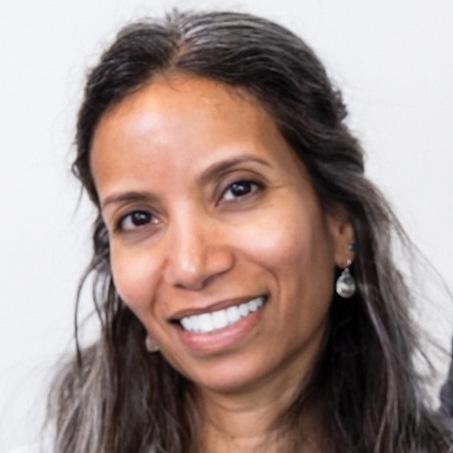
Michael D. Mills Editor In Chief Award
This Award of Excellence is for an outstanding general medical physics article published in JACMP in 2023. Presented in 2024, the awardees were Jacqueline Esthappan Zoberi, Jose GarciaRamirez, David Luechtefeld, Nichole M. Maughan, Maxwell Amurao, Reiko Oyama, Brian C. Baumann, Hiram A. Gay and Jeff M. Michalski for their paper entitled “Logistical, technical, and radiation safety aspects of establishing a radiopharmaceutical therapy program: A case in Lutetium-177 prostate-specific membrane antigen (PSMA) therapy,” J Appl Clin Med Phys., 2023; 24:e13899. https:// doi.org/10.1002/acm2.13899
George Starkschall Award
This Award of Excellence is for an outstanding radiation oncology physics article published in the JACMP in 2023. Presented in 2024, the awardees were John T. Stasko, William S. Ferris, David P. Adam, Wesley S. Culberson and Sean P. Frigo for the paper entitled “IMRT QA result prediction via MLC transmission decomposition,” J Appl Clin Med Phys., 2023; 24:e13990. https://doi.org/10.1002/acm2.13990
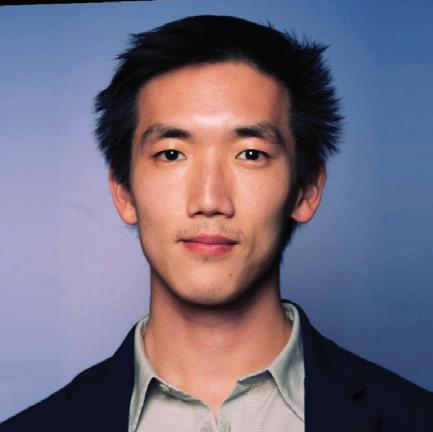
The Peter R. Almond Award of Excellence is for an outstanding radiation measurements article published in JACMP in 2023. Presented in 2024, the awardees were Kevin Liu, Allison Palmiero, Nitish Chopra, Brett Velasquez, Ziyi Li, Sam Beddar and Emil Schüler for their paper entitled “Dual beam-current transformer design for monitoring and reporting of electron ultra-high dose rate (FLASH) beam parameters,” J Appl Clin Med Phys 2023; 24:e13891. https://doi.org/10.1002/acm2.13891.
The Edwin C. McCullough Award of Excellence is for an outstanding medical Imaging physics article published in the JACMP in 2023. Presented in 2024, the awardees were Samaneh Abbasi, Alireza Mehdizadeh, Hamid Reza Boveiri, Mohammad Amin Mosleh Shirazi, Reza Javidan, Raouf Khayami and Meysam Tavakoli, for their paper entitled “Unsupervised deep learning registration model for multimodal brain images,” J Appl Clin Med Phys., 2023; 24:e14177 https://doi.org/10.1002/acm2.14177


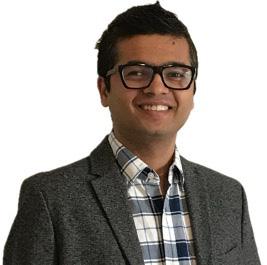
(Funded by the Jack Fowler Award Fund)
This award was established in honor of Jack Fowler, PhD, Emeritus Professor of Human Oncology and Medical Physics, University of Wisconsin. The award was presented to Amrit Kaphle, PhD, The University of Texas MD Anderson Cancer Center, Houston, TX, for the top scoring abstract submitted by Early-Career Investigators who entered the competition, entitled “Incorporation of Fractal-Based DNA Model into High Resolution TEM-Based Model of Gold Nanoparticle-Laden Tumor Cell for Monte Carlo Study of Gold Nanoparticle-Mediated Radiosensitization.”
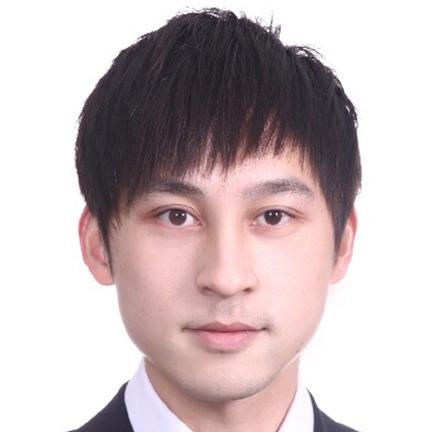
(Funded by the Krohmer Memorial Fund)
This award was established in honor of Jack Krohmer, PhD, a pioneer in the medical physics community. The award was presented to Xiaoyu Hu, PhD, Johns Hopkins University, Baltimore, MD, for the best abstract submitted by EarlyCareer Investigators to the Scientific Program of the AAPM Annual Meeting, judged according to criteria of significance, innovation, and the potential for major scientific impact in an area of cutting-edge interest in medical physics. The abstract was entitled “Detectability of Ultra-Low Concentration Iodine Solutions By PhotonCounting CT.”
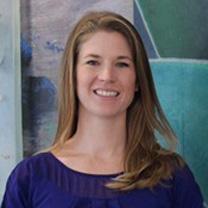
(Funded by the Boyer Innovation in Medical Physics Education Fund)
This award is given for the best presentation at an Education Council session concerning innovative programs in medical physics education of physicists, physicians, ancillary personnel, and the public. Presentations can be concerned with scientific research, novel teaching strategies (team teaching or adult learning efforts), or novel educational materials (lectures, websites, or other innovations). This year’s award went to Kelly Kisling, PhD, UC San Diego, for a presentation entitled, “Harmonizing Medical Physics Education in Nigeria through an Accredited Course: Experiences from a Pilot Program.”


On Medical Ultrasound
(Funded by the endowed Carson/Zagzebski Fund)
On Sunday, March 24 at the 2024 AAPM Spring Clinical Meeting, invited lecturer Jonathan Rubin, University of Michigan Medicine, delivered the lecture, "Assessing Blood Flow Rates in Ultrasound: Clinical Rationale and the Physicist's Role in Getting It Right."
The Anne and Donald Herbert Distinguished Lectureship in Modern Statistical Modeling
(Funded by the endowed Anne and Donald Herbert Fund)
On Tuesday, July 23 at the 2024 AAPM Annual Meeting & Exhibition, invited lecturer Miguel Eckstein, University of California Santa Barbara, delivered the lecture, "The Perception of Medical Images: Past, Present and Future."
(Funded by the endowed John Cameron Fund)
The Early-Career Investigators Symposium is a competition in honor of University of Wisconsin Professor Emeritus John R. Cameron, PhD and John R. Cunningham, PhD, from Princess Margaret Hospital, and subsequently from the University of Alberta. The 10 highest scored abstracts submitted for the Symposium are selected for presentation, from which the top three presentations receive awards. 2024 winners were:
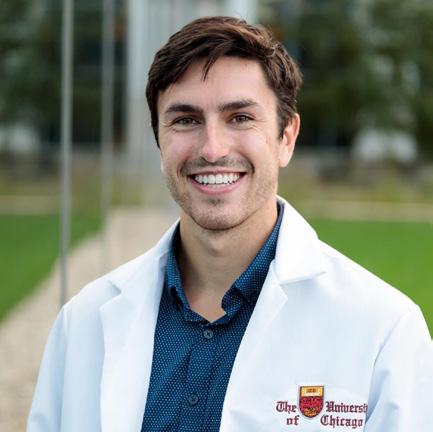
Joseph Cozzi
University of Chicago
“Evaluation of Automatic Segmentations through Performance of Radiomic Features in the Classification of Thyroid Nodules on Ultrasound”
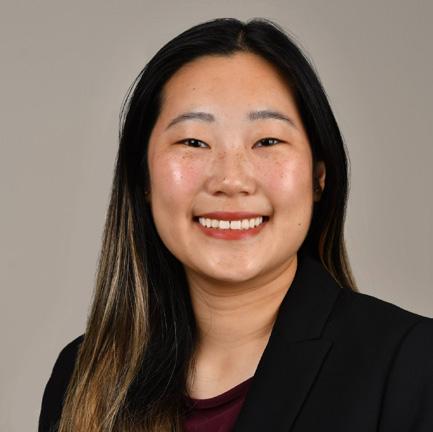
Rebecca Lim
The University of Texas MD
Anderson Cancer Center
“Correlating Ventilation Change over Treatment with Toxicity and Dose in Proton- and PhotonTreated Lung Cancer Patients”

David Adam
Johns Hopkins University
“Development and Evaluation of Parameterizable Salivary Gland Model for Small-Scale Monte Carlo Radiopharmaceutical Therapy Dosimetry”


• Daniel Alexander, PhD
Chief Physics Resident
University of Pennsylvania
Mentor: Issam M. El Naqa, PhD
Moffitt Cancer Center
• Sunan Cui, PhD
Assistant Professor
University of Washington
Mentor: Olivier Morin, PhD University of California San Francisco
• Soleil Hernandez, PhD
Medical Physics Resident
University of Colorado Anschutz Medical Campus
Mentor: Charles S. Mayo, PhD
University of Michigan
• Emily Hewson, PhD
Post Doctoral Researcher
The University of Sydney
Mentor: X. Sharon Qi, PhD
UCLA School of Medicine
• Kricia Ruano Espinoza, MS
Resident Medical Physicist
West Physics
Mentor: Izabella Barreto, PhD University of Florida College of Medicine
• Mary Gronberg, PhD Chief Medical Physics Resident UT Southwestern Medical Center
Mentor: Ana Maria Marques da Silva, DSc University of Sao Paulo (USP) and Medical Imaging & Data Analytics (MEDIIMA)
• Kai Huang, PhD
Medical Physics Resident
University of Maryland Medical Center
Mentor: Manju Sharma, PhD
University of California, San Francisco
• Sudharsan Madhavan, PhD
Therapeutic Medical Physics Resident
Memorial Sloan Kettering Cancer Center
Mentor: Martha M. Matuszak, PhD University of Michigan
• Claire Park, PhD
Medical Physics Resident
Harvard Medical School
Mentor: Laura I. Cervino, PhD
Memorial Sloan Kettering Cancer Center
• Emily Thompson, PhD
Medical Physics Fellow
The University of Texas MD Anderson Cancer Center
Mentor: Ingrid S. Reiser, PhD
The University of Chicago
• Zi Yang, PhD
Medical Physics Resident
Stanford University
Mentor: Kristy K. Brock, PhD
The University of Texas MD Anderson Cancer Center
• Williams Igoniye, MS Chief Scientific Officer
University of Port Harcourt Teaching Hospital
Mentor: Afua Yorke, PhD University of Washington Medical Center
• Ikechi Ozoemelam, PhD
Medical Physics Resident University of Michigan
Mentor: Laurence Court, PhD
The University of Texas MD Anderson Cancer Center
• William Swanson, PhD
Medical Physics Resident
Weill Cornell Medicine
Mentor: Magdalena Bazalova-Carter, PhD
University of Victoria
Mentorship Program (SCAMP) has been established to recognize and cultivate outstanding researchers at an early stage in their careers with the goal of promoting a longterm commitment to science within AAPM. The program uses the process of “shadowing” to integrate the Associates into the scientific activities of the organization. Science Council Associates participate in the program for one year and are funded up to $4,000 per Associate (to cover travel costs including flight, hotel, and meeting registration) to attend two consecutive AAPM Annual Meetings.
Program (ICAMP) is a prestigious program that recognizes and cultivates outstanding medical physicists at an early stage in their careers, and aims to promote a longterm commitment to global health and international activities within AAPM. ICAMP uses a mentorship and shadowing model, allowing Associates to engage and participate with the International Council and its related internationally focused activities. International Council Associates participate in the program for one year and are funded up to $4,000 per Associate (to cover travel costs including flight, hotel, and meeting registration) to attend two consecutive AAPM Annual Meetings.


Travel Grants are awarded twice annually. As many as ten grants, each up to $1,250, are given for the purpose of providing additional support for student and trainee travel to conferences that are not specifically geared toward medical physics. The travel grant is designed to provide an opportunity to broaden the scope of scientific meetings attended in order to introduce students and trainees to new topics which may be of relevance to medical physics research and which may subsequently be incorporated into future research in order to progress the field in new directions.
Scholarships are in the form of a full waiver of tuition fees for the entire AAPM 2024 Summer School. This award is available to applicants who are in the first five years of their careers in medical physics.
TeamBest® provides funding for 10 fellowships in the amount of $500 each, to be used for travel, food and lodging expenses to attend the Annual Meeting. AAPM provides complimentary Annual Meeting registration for each recipient, including social functions.
Round 1
• Ngara Bird
Duke University Health System
• Shaojie Chang
Mayo Clinic
• Geneva Schlafly
University of Chicago
• Zakery Simpson
Wellspan Health
• Yao Chen
Dartmouth College
• Evan Porter
University of California San Francisco
• Amal Aziz
Duke University Medical Center
• Chris Beekman
Massachusetts General Hospital / Harvard Medical School
• Christian Gibson
Duke University
• Mason Heath
Louisiana State University
• Rebecca Lim
The University of Texas MD Anderson Cancer Center
• Mandira Manandhar
The University of Texas MD Anderson Cancer Center
Round 2
• Wesley Cunningham
Duke University Medical Center
• Jun Hong The University of Texas MD Anderson Cancer Center
• Zi Yang Stanford University
• Jingtong Zhao Duke University Medical Center
• Austin Sloop Dartmouth College
• Kaley Woods University of Southern California
• Toby Morris University of Massachusetts Lowell
• Oscar PastorSerrano Stanford University
• Atharva Peshkar
University of Colorado Boulder
• Mitchell Yu Memorial Sloan Kettering Cancer Center




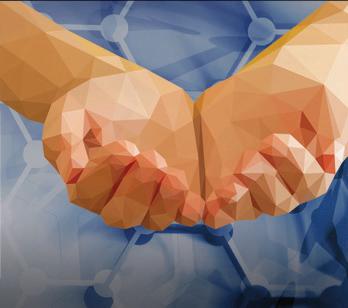
https://www.aapm.org/education/edfundlinks.asp


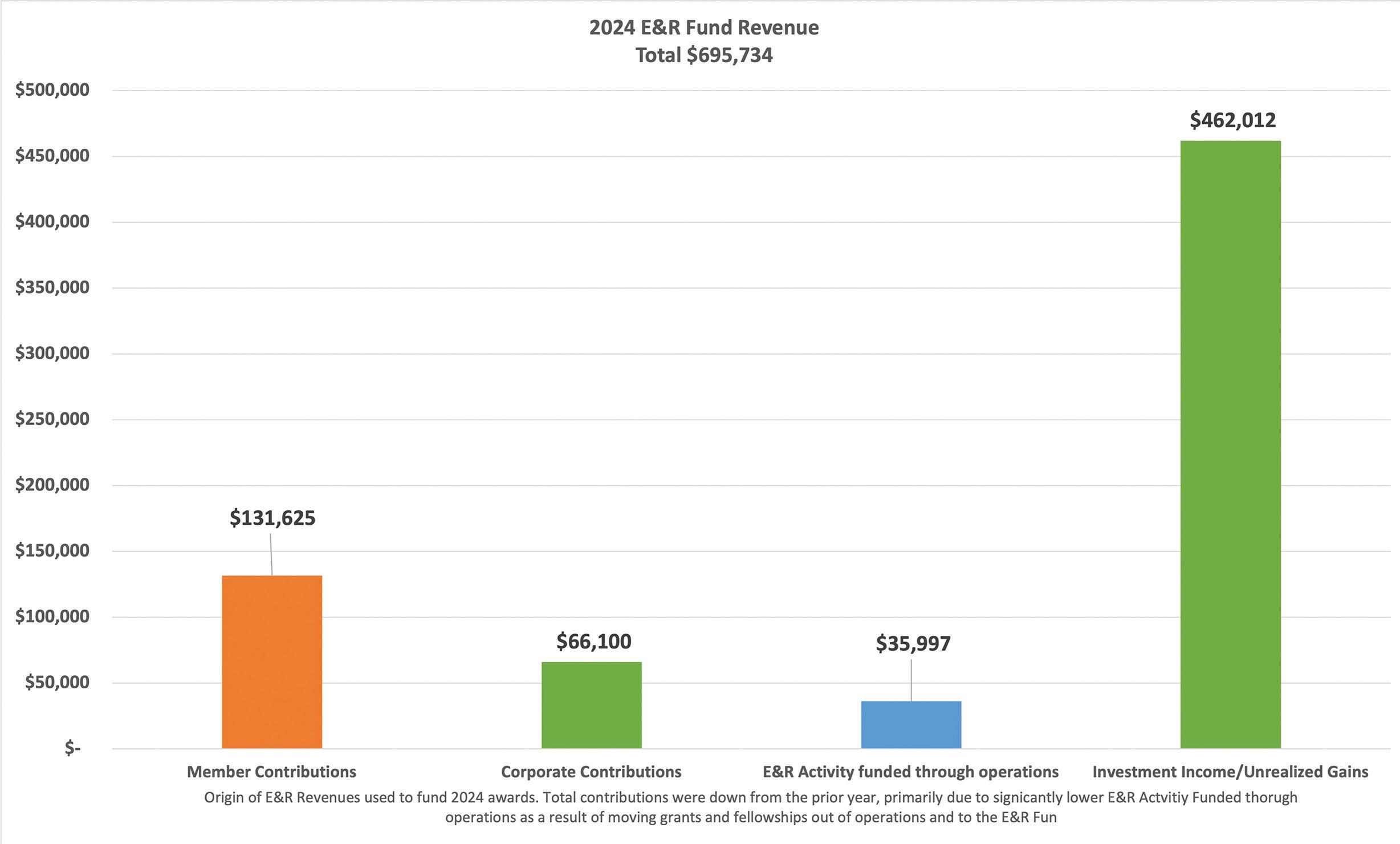



(As of December 31, 2024)
AAPM would like to acknowledge and thank the following individuals and organizations who have made contributions to the Education & Research Fund since its inception in 1990:
Diamond Contributors
$20,000 and Above
Individuals
Arthur L. Boyer, PhD
Paul L. Carson, PhD
Bruce H. Curran, MEng
Jerome G. Dare, PhD
John Wesley Geary, III
John P Gibbons, Jr., PhD
Bret H. Heintz, PhD
Donald E. Herbert, PhD
Kenneth R. Hogstrom, PhD
Bob Liu, PhD
Rebecca N. Mahon, PhD
Richard E. Michaels, MS
Radhe Mohan, PhD
Ewa Papiez, MS
Matthew J. Riblett, PhD
Larry E. Sweeney, PhD
James A. Terry, PhD
William G West, PhD
Ellen D. Yorke, PhD
James A. Zagzebski, PhD
Organizations
AAPM
AAPM Northwest Chapter
AAPM Southeast Chapter
AAPM Southwest Chapter
American Institute of Physics
American Society for Radiation Oncology
Best Medical International
Elekta, Inc.
Radiological Society of North America
Society of Nuclear Medicine and Molecular Imaging
Varian Medical Systems, Inc.
West Physics
Platinum Contributors
$10,000 – $19,999
Individuals
Joseph C. Alappattu, MS
Hassaan Alkhatib, PhD
Peter R. Almond, PhD
John A. Antolak, PhD
Stephen Balter, PhD
Gary T. Barnes, PhD
Libby F. Brateman, PhD
Arnold Z. Cohen, MS
Colleen M. Desrosiers, PhD
Robert L. Dixon, PhD
Kunio Doi, PhD
Joel E. Gray, PhD
Moses A. Greenfield, PhD
Leroy J. Humphries, PhD
Geoffrey S. Ibbott, PhD
Jennifer Lynn Johnson, PhD
James G. Kereiakes, PhD
Faiz M. Khan, PhD
Charles Lescrenier, DSc
Christopher H. Marshall, PhD
Mary Ellen MastersonMcGary, MS
Edwin C. McCullough, PhD
Richard L. Morin, PhD
Michael T. Munley, PhD
Ravinder Nath, PhD
Jatinder R. Palta, PhD
Daniel C. Pavord, MS
Yakov M. Pipman, DSc
Daniel G Robertson, PhD
Alfred R. Smith, PhD
Edward S. Sternick, PhD
Russell Blaine Tarver, MS
Stephen R. Thomas, PhD
Donald D. Tolbert, PhD
Edward W. Webster, PhD
Robert John Wilson, PhD
Ann E. Wright, PhD
Organizations
AAPM Florida Chapter
AAPM New York (RAMPS) Chapter
AAPM North Central Chapter
Computerized Imaging Reference System, Inc.
Gold Contributors
$5,000 – $9,999
Individuals
Muthana S.A. L. Al-Ghazi, PhD
Jerry D. Allison, PhD
Howard Ira Amols, PhD
Joseph S. Blinick, PhD
Jing Cai, PhD
Richard Castillo, PhD
Edward L. Chaney, PhD
Jessica Clements, MS
Indra J. Das, PhD
Joseph O. Deasy, PhD
Jimmy O. Fenn, PhD
Theodore Fields, MS
Richard A. Geise, PhD
Maryellen L. Giger, PhD
Carri K. Glide-Hurst, PhD
Steven J. Goetsch, PhD
Madhup Gupta, MS
Per H. Halvorsen, MS
Deanna Hasenauer, PhD
Joseph P. Hellman, MS
William R. Hendee, PhD
Michael G. Herman, PhD
Walter Huda, PhD
Edward F. Jackson, PhD
Robert J. Jennings, PhD
Kenneth R. Kase, PhD
Carolyn M. Kimme-Smith, PhD
John S. Laughlin, PhD
Lisa C. Lemen, PhD
Zuofeng Li, DSc
Nai-Hsiang David Liu, PhD
Eric Lobb, MS
Sam H. Lott, Jr., PhD
Thomas R. Mackie, PhD
Nicholas Marsh, MS
Mary L. Meurk
Tariq A. Mian, PhD
Michael D. Mills, PhD
Shantilata Mishra, PhD
Andrea Molineu, MS

Adel A. Mustafa, PhD
Robert M. Nishikawa, PhD
Colin G. Orton, PhD
Jacques Ovadia, PhD
Pankaj Patel, PhD
Ervin B. Podgorsak, PhD
James A. Purdy, PhD
Ehsan Samei, PhD
Robert Sanford, PhD
J. Anthony Seibert, PhD
Christopher F. Serago, PhD
Anil Sethi, PhD
Shakil B Shafique, MS
Charles Shang, MB
Renu K. Sharma, MS
Chengyu Shi, PhD
Rene J. Smith, PhD
George Starkschall, PhD
Justin M. Stewart
Nagalingam
Suntharalingam, PhD
Raymond L. Tanner, PhD
Bruce R. Thomadsen, PhD
Earl A Trestrail, MS
Jacob Van Dyk, DSc
Adam S Wang, PhD
Mark Bennett Williams, PhD
Kenneth A. Wright, MS
Raymond K. Wu, PhD
Michael V. Yester, PhD
Fang-Fang Yin, PhD
Organizations
AAPM Arizona Chapter
AAPM Delaware Valley Chapter
AAPM New England Chapter
Medical Physics Foundation
Silver Contributors
$2,500 – $4,999
Individuals
Farideh R. Bagne, PhD
Bette W. Blankenship, MS
Maria F Chan, PhD
Wesley S. Culberson, PhD
Nicholas A. Detorie, PhD
Maximian Felix D'Souza, PhD
Scott J. Emerson, MS
Lynne A. Fairobent
Karl J. Farrey, MS
D. Jay Freedman, MS
G. Donald Frey, PhD
Hy Glasser
David Lee Goff, PhD
John Hale, PhD
Oliver D. Hanson, MS
Jung T. Ho, PhD
M. Saiful Huq, PhD
Mary Ellen Jafari, MS
C. Clifton Ling, PhD
James Chi-Wing Liu, PhD
Chang Ming Charlie Ma, PhD
Harold Marcus, MA
Melissa Carol Martin, MS
James E. McDonough, PhD
Sharon K. McMillan, MS
Michael F. McNitt-Gray, PhD
Robert J. Morton, Jr., MS
Lee T. Myers, PhD
Barbara G. Orton, MS
Baldev R. Patyal, PhD
Robert J. Pizzutiello, Jr., MS
Don P. Ragan, PhD
Daniel M. Ritt, MS
Lawrence N. Rothenberg, PhD
Guy H. Simmons, Jr., PhD
Kelly M. Spencer, MS
Donna M. Stevens, MS
John B. Sweet, MS
Sugata Tripathi, PhD
Kenneth Ulin, PhD
Kenneth N. Vanek, PhD
Shirley D. Vickers, MS
John T. Washington, MS
Michelle C. Wells, MS
Qinghui Zhang, DSc
Organizations
AAPM Connecticut (CAMPS) Chapter
AAPM Southern California Chapter
North American Chinese Medical Physics
Association
University of WisconsinMadison
Copper Contributors
$1,000 – $2,499
Individuals
Suresh K. Agarwal, PhD
B. (Wally) Ahluwalia, PhD
A. Madjid Aissi, PhD
David M. Applebaum, MS
Samuel G. Armato, III, PhD
Arjit K. Baghwala, MS
Jonathan K. Bareng, MS
Jan Barkley
Daniel A. Bassano, PhD
John E. Bayouth, PhD
Joseph Lawrence Beach, PhD
John M. Boone, PhD
Elizabeth L. Bossart, PhD
Stephen L. Brown, PhD
Harry S. Bushe, MS

Priscilla F. Butler, MS
Gene A. Cardarelli, PhD
David J. Carlson, PhD
Jean Jacques Chavaudra, ScD
Zhe (Jay) Chen, PhD
Kenneth C. Chu, PhD
Charles W. Coffey, II, PhD
Joanna E. Cygler, PhD
Edmund P. Cytacki, PhD
Domenico Delli Carpini, PhD
Jun Deng, PhD
James A. Deye, PhD
Dominic J. DiCostanzo, PhD
Lei Dong, PhD
Karen P. Doppke, MS
David O. Findley, PhD
Jennifer Hann Fisher, MS
Doracy P. Fontenla, PhD
Gary D. Fullerton, PhD
Robert G. Gandy, MS
Cal Glisson, MPH
Lee W. Goldman, MS
Michael S. Gossman, MS
Bennett S. Greenspan, MD
Russell J. Hamilton, PhD
Joanna M. Harper, MS
Brian F. Hasson, PhD
John D. Hazle, PhD
Chris M. Hearn, MS
Philip H. Heintz, PhD
Kristi Rae Gayle
Hendrickson, PhD
Frank William Hensley, PhD
Maynard D. High, PhD
Jerald W. Hilbert, PhD
F. Eugene (Gene) Holly, PhD
Donald E Holmes, PhD
Alan L. Huddleston, PhD


Kristina E. Huffman, MMSc
Margie A. Hunt, MS
Michael A. Jacobs, PhD
Zheng Jin, MS
Loretta M Johnson, PhD
Steven M. Jones, MS
Philip F. Judy, PhD
Kalpana M. Kanal, PhD
Haejin Kang, PhD
C. J. Karzmark, PhD
Angela R. Keyser
Robert J. Kobistek, MS
James M. Kortright, PhD
Michael E Kowalok, PhD
Jack S. Krohmer, PhD
Roger O. Ladle, MPhil
Danny J. Landry, PhD
Donald W. Laury, MS
Louis B. Levy, PhD
David A. Lightfoot, MA
Liyong Lin, PhD
Carl Lindner III
Dale W. Litzenberg, PhD
Eric H Loevinger
Joel Thomas Love, MS
Xiaoyi Lu
Larry W. Luckett, MS
Gary Luxton, PhD
Lijun Ma, PhD
Eugene Mah, PhD
M Mahesh, PhD
Alexander Markovic, PhD
Mary K. Martel, PhD
Kenneth (Kip) Matthews, II, PhD
Martha M. Matuszak, PhD
Matthew A Meineke, PhD
Christopher S. Melhus, PhD
Albert V. Mesa, MS
Robin A. Miller, MS
George Mitev, PhD
Michael H. Moloney
Mary E. Moore, MS
Jose A. Morales Monzon, MS
David M. Nelson, PhD
Walter Nikesch, PhD
Olabode Thomas
Ogunleye, PhD
Arthur J. Olch, PhD
Mark Oldham, PhD
Brent C. Parker, PhD
E. Ishmael Parsai, PhD
Kishor M. Patel, PhD
J. Thomas (Tom) Payne, PhD
Jacob S. Philip, MS
Michael J. Price, PhD
Joann I. Prisciandaro, PhD
Prema Rassiah, PhD
Chester S. Reft, PhD
Susan L Richardson, PhD
Miguel A. Rios, MS
E. Russell Ritenour, PhD
Mark J. Rivard, PhD
Gene E. Robertson, MS
Thomas Ruckdeschel, MS
Donald R. Ruegsegger, Jr., PhD
George A. Sandison, PhD
Vikren Sarkar, PhD
Jan P. Seuntjens, PhD
Douglas R. Shearer, PhD
S. Jeff Shepard, MS
Deborah J. Shumaker, MS
Melvin P. Siedband, PhD
Douglas J. Simpkin, PhD
Larry D. Simpson, PhD
James B. Smathers, PhD
David P. Spencer, PhD
Perry Sprawls, Jr., PhD
Jean M. St. Germain, MS
Richard H. Stark, MS
Eric L. Stauffer, MS
Keith J. Strauss, MS
John W. Sweet, Jr., PhD
David W. Switzer, Sr., MS
Philip M. Tchou, PhD
Sean Thomas Toner, MS
Suzanne E. Topalian, MS
Jon H. Trueblood, PhD
Prof Frank Van den Heuvel, PhD
Rafaela Varela Rohena, MS
Linda A. Veldkamp, PhD
Timothy J. Waldron, MS
Steven Wang, PhD
Christopher J. Watchman, PhD
Rebecca Weinberg, PhD
Martin S. Weinhous, PhD
Richard E. Wendt, III, PhD
Marilyn C. Wexler, MS
Gerald A. White, Jr., MS
Thomas A. White, Jr., PhD
Brian D Wichman, MS
Jeffrey F. Williamson, PhD
John Willins, PhD
John W. Winston, Jr., MS
Charles Wissuchek, MS
John F. Wochos, MS
John W. Wong, PhD
Qingrong Jackie Wu, PhD
Lei Xing, PhD
Jack Yang, PhD
Corey E. Zankowski, PhD
Pengpeng Zhang, PhD
Ningsheng Zhu, PhD
X. Ronald Zhu, PhD
Organizations
AAPM Great Lakes Chapter
AAPM Missouri River Valley Chapter
Amazon Smile
American Board of Radiology
Northwest Medical Physics Center
Bronze Contributors
$500 – $999
Individuals
Gail D. Adams, PhD
E. Theodore Agard, PhD
Parham Alaei, PhD
Ben A. Arnold, PhD
Rex G. Ayers, MEng
Edward T. Bacza, MS
Morris I. Bank, PhD
Ande Bao, PhD
Margaret Cunningham
Barker, MS
J. Ed Barnes, PhD
Jerry J. Battista, PhD
Wolfgang W Baus, PhD
Alric E. Beach, MS
Mark M. Belanich, MS
Clyon Wayne Bell
Ishtiaq Hussain Bercha, MS
Carl E. Bergsagel, MPH
William S. Bice, Jr., PhD
Anthony P Blatnica, MS
Evan J. Boote, PhD
Cristina Boswell, MS
Robert A. Boyd, PhD
Stewart C. Bushong, ScD
Carlos A. Caballero, MS
Kenneth W. Cashon, MS
Sandra L. Chan, PhD
Vorakarn Chanyavanich, PhD

Yan Chen, PhD
Kenneth A. Coleman, MEng
Virgil N. Cooper, III, PhD
Stéphanie B. Corde, PhD
Mihaela Cosma, MS
J. Adam M. Cunha, PhD
Cupido Daniels, PhD
Jaydev K. Dave, PhD
Jesus E. Davila, DSc
Paul M. DeLuca, Jr., PhD
John J. DeMarco, PhD
Shivaji M. Deore, PhD
Dharmin D. Desai, PhD
Ferney Díaz Molina
James T. Dobbins, III, PhD
Arden E. Dockter, MS
Derek Dolney, PhD
Scott Dube, MS
Robert J. Duerkes, Jr., MS
James E. Durlacher
Issam M El Naqa, PhD
Ravimeher L. Errabolu, PhD
Tony Falco, PhD
Martin W. Fraser, MS
James M. Galvin, DSc
Steven Anthony Gasiecki, MS
William R. Geisler, MS
S. Murty Goddu, PhD
David Lloyd Goff, PhD
Michael E. Goodwill, MS
James H. Goodwin, MS
Paul N. Goodwin, PhD
Anne W. Greener, PhD
Nilendu Gupta, PhD
David Gur, ScD
Samuel S. Hancock, PhD
Vijay A. Harwalkar, PhD
Bruce H. Hasegawa, PhD
Joe R. Haywood, PhD
Shawn H Heldebrandt, MS
Randall William Holt, PhD
Dimitre Hristov, PhD
Lincoln B. Hubbard, PhD
Gulkan Isin, MS
Amanda M. Jackson, MS
Jian-Yue Jin, PhD
Perry B. Johnson, PhD
Ross E. Johnson, MS
A. Kyle Jones, PhD
Ajay Kapur, PhD
Alireza Kassaee, PhD
Sunil A. Kavuri, MS
Paul J. Keall, PhD
Kevin O. Khadivi, PhD
Paul King, MS
Assen S. Kirov, PhD
Nicholas C Koch, PhD
Bradford M. Krutoff, MS
Min Y. Leu, PhD
Shidong Li, PhD
Pei-Jan P. Lin, PhD
Hui Helen Liu, PhD
Michele F. Loscocco, MS
D. Michael Lovelock, PhD
Zheng Feng Lu, PhD
Gig S. Mageras, PhD
Stephen Mahood, MS
William Malloy
Lesley Ann Malone, PhD
Sivasubramanian R. Manoharan, PhD
David S. Marsden, PhD
Jimmy D Martin, MS
William A. McCarthy, MS
Sarah E. McKenney, PhD
Jeffrey G. Messinger, MEng
David R. Metcalf, PhD
Dimitris N. Mihailidis, PhD
Ira D. Miller, MS
Dragan Mirkovic
Raj K. Mitra, PhD
Jean M. Moran, PhD
Olivier Morin, PhD
Herbert W. Mower, ScD
Alois M. Ndlovu, PhD
Wayne D. Newhauser, PhD
Yury Niatsetski, MS
Colville E. Osborne, MS
Thomas Oshiro, PhD
Niko Papanikolaou, PhD
Stephanie A Parker, MS
Norris J Parks, PhD
Kurt H. Pedersen, MS
Angelica A. Perez-Andujar, PhD
Paula L. Petti, PhD
Douglas E. Pfeiffer, MS
Tina L. Pike, PhD
Bhaskaran K. Pillai, PhD
Richard A. Popple, PhD
Robert A. Praeder, MS
Lihong Qin, PhD
Nicole T. Ranger, MS
Bimba Rao
Surendar P. Rao, M.Sc
Ingrid S. Reiser, PhD
Peter J. Rosemark, PhD
Isaac Rosen, PhD
Narayan Sahoo, PhD
Javier Santos, PhD
Stephen Sapareto, PhD
Daren Sawkey, PhD
Matthew C. Schmidt, PhD
Alan Schoenfeld, MS
Cheryl Culver Schultz, MS
Purushottam D. Sharma, MS
Ke Sheng, PhD
Jeffrey V. Siebers, PhD
Michael D. Silver, PhD
Warren K. Sinclair, PhD
Ramon Alfredo C. Siochi, PhD

John P. Skrobola, MS
Jennifer B. Smilowitz, PhD
Jerry Soen, MS
James R. Spencer, MS
Robert E. Stanton, PhD
Keith M Stantz, PhD
K. David Steidley, PhD
Stacy L Stephenson, MS
Palmer G. Steward, PhD
Thomas G. Stinchcomb, PhD
Krystina M Tack, PhD
Bruno Tchong Len, MS
Samuel Trichter, DrPH
Julius V. Turian, PhD
Matt Vanderhoek, PhD
Ruth E Velasco-Schmitz, PhD
John Matthew Wait, MS
Alisa I. Walz-Flannigan, PhD
Dongxu Wang, PhD
Xiaoyang Betsy Wang, MS
Thomas J Whitaker, PhD
Wesley W. Wooten, PhD
Di Yan, DSc
Yulong Yan, PhD
Cedric X. Yu, DSc
Ning J Yue, PhD
Omar Zeidan, PhD
Lei Zhang
Yunkai Zhang, PhD
Andy A Zhu, PhD
Timothy C. Zhu, PhD
Terry David Zipper, MS
Organizations
American Board of Radiology Foundation
Cancer Treatment Services, San Diego LLC




